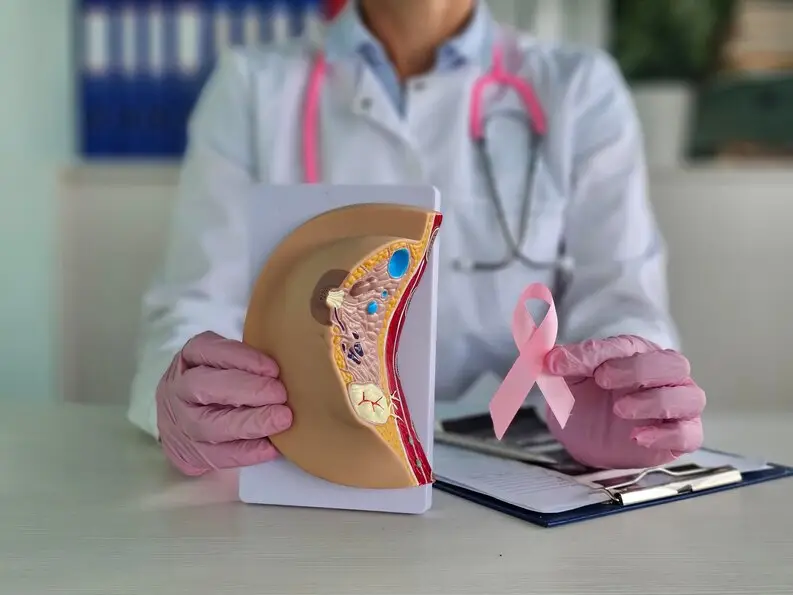Introduction
Breast Cancer Spread to Thyroid Symptoms and Treatment Options: Breast cancer kills millions every year across the globe, and thyroid cancer has been on the rise over the past few years. Although no one knows precisely how these two cancers might be related, it is becoming increasingly clear that breast cancer may eventually spread to the thyroid gland, creating new complications and patient management issues.
This article seeks to explore the current state of knowledge regarding breast cancer and thyroid cancer, its clinical manifestation, diagnosis, and treatment for patients who are diagnosed with this uncommon yet devastating complication.
Metastatic Breast Cancer in the Thyroid Gland

Surgically advanced cancer of the thyroid is rare, with several primary sites described in the literature. Cancers of the lung, kidneys, and breast are the primary tumors that most often reach the thyroid. As with breast cancer, it accounts for 1-3% of all thyroid cancers.
Not everyone knows exactly how breast cancer cells get inside and colonize the thyroid gland. Still, we know that it involves elaborate signaling networks and breast cancer cells adapting to the microenvironment of the thyroid.
Breast cancer can spread to thyroid, causing symptoms like swelling and difficulty swallowing. Early detection is key for effective treatment. Visit Dexans for expert advice and resources on managing this condition.
Symptoms and Diagnosis

For example, patients with metastatic thyroid cancer can have symptoms such as a tactile thyroid nodule, numbness of the neck, dysphagia, and even difficulty breathing. Sometimes, thyroid metastasis is the initial manifestation of primary breast cancer, which means it is a later or unexpected diagnosis.
Diagnostic testing typically involves a mix of imaging techniques, including ultrasonography, computed tomography, or positron emission tomography, to detect the presence and characteristics of the thyroid lesion. Sometimes, a thyroid nodule biopsy can be performed to confirm the diagnosis and differentiate primary thyroid cancer from metastatic disease.
Read More: Gallstones in Toilet Bowl: Cause and Treatment
Treatment Considerations

The management of patients with metastatic breast cancer of the thyroid is often multidisciplinary. One option is to remove the thyroid cyst, especially if the metastasis is isolated and the primary breast cancer is under control. But, in general, survival for these patients is minimal – the median survival is between a few months and a few years, depending on the stage and severity of the underlying breast cancer.
Alongside surgery, other therapies may include radioactive iodine treatment, external beam radiation, and systemic chemotherapy to control the metastatic disease and alleviate symptoms. Scientists have also examined whether specific therapies, like tyrosine kinase inhibitors, might be appropriate for metastatic thyroid disease.
Read More: Do Magnalite Pots Cause Cancer? A Comprehensive Guide
Conclusion Breast Cancer Spread to Thyroid Symptoms and Treatment Options
Breast Cancer Spread to Thyroid Symptoms and Treatment Options: Breast cancer that spreads to the thyroid is a sporadic but clinically significant outcome that can have devastating consequences on patient care and survival. Suppose you want to deliver comprehensive and effective care to this patient group. In that case, it is crucial to know how this condition presents, can be diagnosed, and what treatments are available.
Thyroid gland metastasis from breast cancer is a complex and messy situation, and you have to treat it in multiple ways. They may present symptoms ranging from apparent thyroid nodules to stiff necks and respiratory failure.
A reliable diagnosis often requires imaging and biopsy in order to separate primary thyroid cancer from metastatic disease.
Depending on the type of metastatic lesions and the stage of primary cancer, it may be managed with surgery, radioactive iodine, external beam radiation, and systemic chemotherapy. It’s a terrible outcome for these patients, so it’s critical that they are diagnosed early and treated in collaboration across disciplines to maximise the outcome.
Did you find this article helpful? Explore more on Dexans‘ blog for additional tips, expert insights, and much more!


